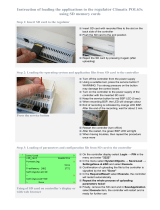
viii n n n n n n n
cgi.c and file.c files ............................................................112
Creating Web pages ...................................................................113
AWS custom variables ..........................................................113
Data types .......................................................................114
Displaying variables ............................................................115
Changing variables..............................................................115
Security...........................................................................118
Exceptional cases ...............................................................118
Controlling the MAW module ........................................................119
Setting the semaphore timeout ..............................................119
Array subscripts .................................................................120
Error handling ...................................................................121
Phrase dictionaries and compression ........................................121
Maintaining and modifying Web content...........................................122
Sample applications ...................................................................123
Part 5: Miscellaneous .................................124
Chapter 14: Porting NET+OS v6.x Applications to NET+OS
v7.x ........................................................................................................................................................125
Changes to the flash driver ..........................................................126
IAM and ACE ............................................................................126
Changes to the sockets API...........................................................126
Changes to SNMP.......................................................................128
netos/src/bsp/customize directory ................................................128
Changes to Makefile variables and defines ........................................128
Automatic RAM sizing .................................................................129
Porting pre-NETOS 7.x PPP applications ...........................................130
Adding a route ..................................................................130
Deleting a route.................................................................130
Adding PAP user/password or adding CHAP ID and secret key pair .....130
Checking link status ............................................................131
Creating the interface .........................................................131
Getting the peer assigned local address ....................................132





















